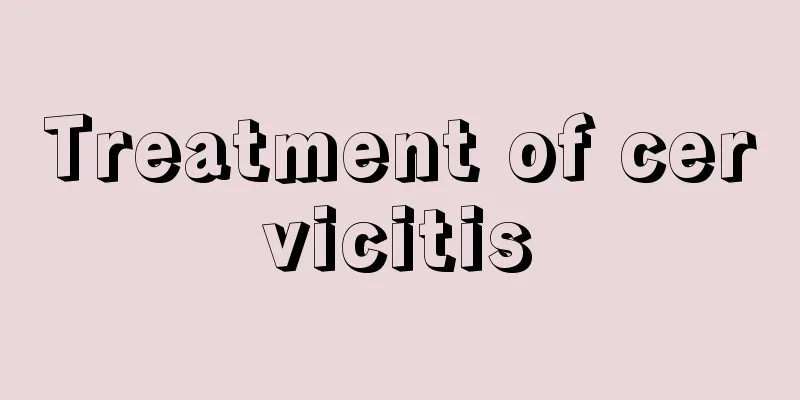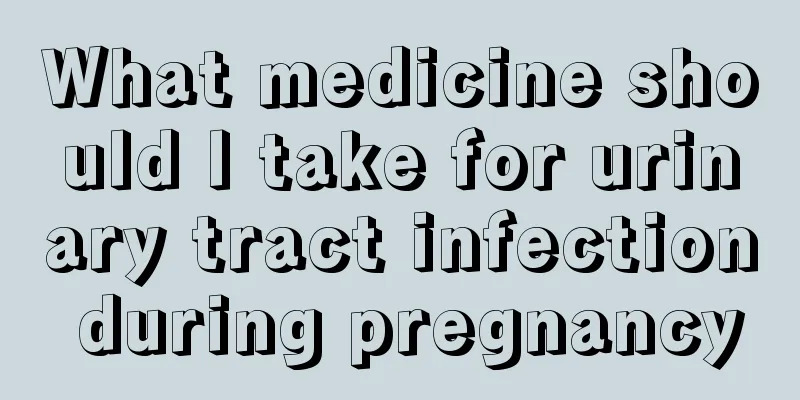Treatment of cervicitis

|
As we all know, if cervicitis is not cured in time in women, the inflammation site will worsen and continue to expand. Therefore, for the treatment of cervicitis, patients with cervicitis need to find and treat them in time. Next, we will tell you about several commonly used methods of treating cervicitis, hoping to help everyone. 1. Acute cervicitis The main treatment is antibiotics. (1) Empirical antibiotic treatment For patients with the following high-risk factors for sexually transmitted diseases (such as age under 25 years, multiple or new sexual partners, and unprotected sexual intercourse), empirical antibiotic treatment against Chlamydia is used before the results of pathogen testing are obtained. (2) Antibiotic treatment targeting pathogens For those who have acquired pathogens, antibiotics targeting pathogens are selected. Since Neisseria gonorrhoeae infection is often accompanied by chlamydial infection, if it is gonococcal cervicitis, in addition to using anti-Neisseria gonorrhoeae drugs, anti-chlamydial infection drugs should also be used during treatment. (3) Treatment of sexual partners: If the pathogens of cervicitis patients are Chlamydia trachomatis and Neisseria gonorrhoeae, their sexual partners should be examined and treated accordingly. Different lesions are treated with different treatments. For patients who present with erosive changes, if it is asymptomatic physiological columnar epithelial ectopia, no treatment is required. For erosive changes accompanied by increased secretions, papillary hyperplasia or contact bleeding, local physical therapy can be given, including laser, freezing, microwave and other methods. Traditional Chinese medicine treatment can also be given or used as an auxiliary treatment before or after physical therapy. However, cervical intraepithelial neoplasia and cervical cancer must be excluded by screening before treatment. 2. Chronic cervicitis (1) Chronic endocervical mucositis For persistent endocervical mucosal inflammation, it is necessary to understand whether there is reinfection with Chlamydia trachomatis and Neisseria gonorrhoeae, whether the sexual partner has been treated, and whether vaginal microbiome imbalance persists. Treatment is directed at the cause. For those whose pathogens are unclear and there is no effective treatment, physical therapy can be tried. (2) Cervical polyps are treated with polypectomy, and the removed polyps are sent for pathological histological examination. (3) Cervical hypertrophy generally does not require treatment. Generally speaking, when people are looking for treatment methods for their cervicitis, they need to find out in advance whether the stage of their cervicitis is acute or chronic. Clinically, there are certain differences in the treatment methods for acute and chronic cervicitis. Therefore, patients with cervicitis must pay more attention. |
<<: What is the treatment for cervicitis?
>>: What is the cause of cervicitis
Recommend
What to do if wisdom teeth become inflamed during pregnancy
If wisdom teeth become inflamed during pregnancy,...
Is the green yolk poisonous? Avoid these 3 common mistakes when eating eggs
Many people eat boiled eggs every morning, and th...
Can I eat before having a painless abortion?
With the continuous development of society, peopl...
What are the symptoms of breast nodular disease?
Female friends may often have breast pain. Since ...
What is the fetal movement like in the seventh month of pregnancy
As the pregnancy progresses, the pregnant woman&#...
What to do if you are pregnant with cholecystitis
If a patient with cholecystitis becomes pregnant ...
What are the dangers of drinking less water during pregnancy?
As we all know, pregnant women should pay attenti...
Penis endurance training exercises
As a man, we all hope that we can last longer. Bu...
Can I take medicine to abort a large gestational sac if the embryo stops developing?
The size of the gestational sac in each pregnant ...
The battle to protect your five senses: A review of holiday health risks
In a few days, we will usher in the Spring Festiv...
What are the symptoms of liver blood deficiency in women?
No matter what age women are, they all want to be...
Nose squeeze blackheads leave black marks
Blackheads are scratches that affect the appearan...
White pimples on vulva
The occurrence of white pimples on the vulva will...
Why do I feel dizzy after taking progesterone tablets?
The side effects of estrogen include dizziness an...
Can a vulvar tear heal on its own?
It is very common for women to have vulvar tears ...









